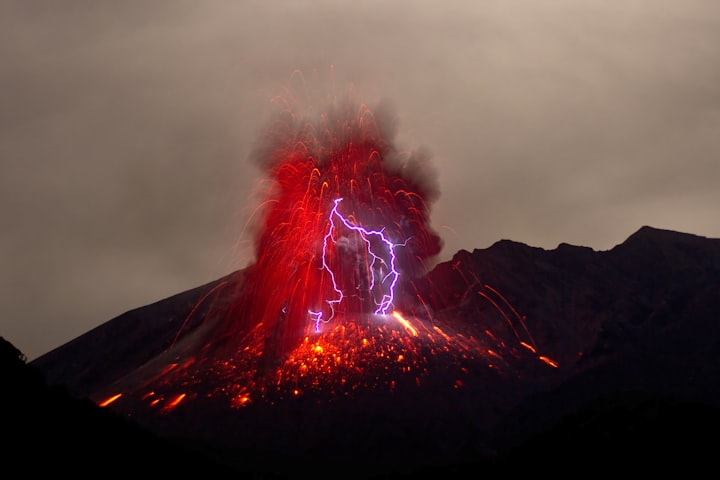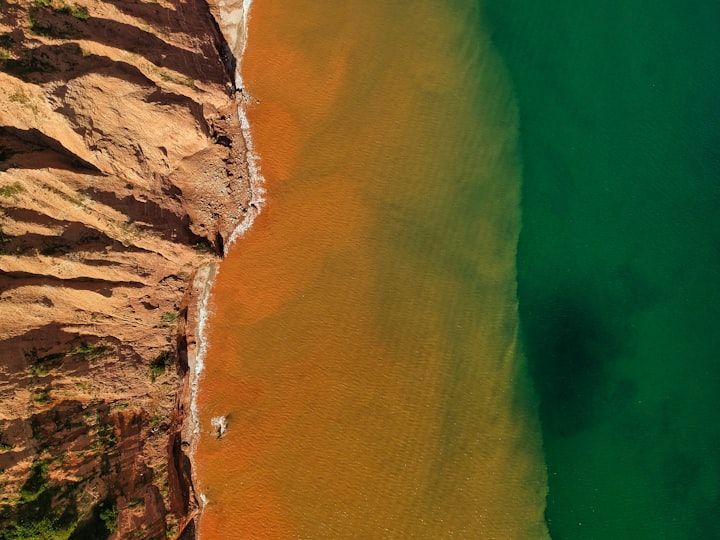The Eruptions That Shook the World: The Top Five Volcanoes with the Most Devastating Impacts
Nature's Most Destructive Forces: A Look at the Top Five Volcanic Eruptions

I. Introduction
A volcano is an opening in the Earth's surface through which molten rock (magma) and ash can escape. Magma is formed when the Earth's mantle (a layer of the Earth below the crust) melts and rises to the surface. When it reaches the surface, it is called lava. Volcanoes can form in several different ways, including through the movement of tectonic plates, through the rising of magma from the mantle, and through the eruption of hot spots (areas where magma from the mantle is able to reach the surface).
Volcanoes can have devastating impacts on the surrounding areas and the world. They can cause destruction through lava flows, pyroclastic flows (a mix of hot gases and ash), and ash and rockfall. Volcanoes can also cause fatalities and displace large numbers of people. In addition, volcanic eruptions can have long-term impacts on the climate and can cause temperature changes and crop failures.
II. The Top Five Most Devastating Volcanic Eruptions
#5: Mount Tambora (Indonesia, 1815) - Mount Tambora is a stratovolcano (a tall, cone-shaped volcano built from layers of ash, lava, and rock) located on the island of Sumbawa in Indonesia. In April 1815, it erupted in one of the most powerful volcanic eruptions in recorded history, releasing an estimated 160 cubic kilometers of ash and pumice into the atmosphere. The eruption caused widespread death and destruction, with an estimated 92,000 fatalities. The ash and debris from the eruption also caused a "year without a summer" in 1816, with cold temperatures and heavy rain causing crop failures around the world.
#4: Krakatoa (Indonesia, 1883) - Krakatoa is a volcanic island located in the Sunda Strait between the islands of Java and Sumatra in Indonesia. In August 1883, it erupted with such force that it caused a massive tsunami and led to the deaths of more than 36,000 people. The explosion was so loud that it was heard as far away as Perth, Australia (more than 4,800 kilometers away). The ash and debris from the eruption also caused global temperatures to drop and led to spectacular sunsets around the world due to the scattering of sunlight by the volcanic particles in the atmosphere.
#3: Mount Pelee (Martinique, 1902) - Mount Pelee is a stratovolcano located on the island of Martinique in the Caribbean Sea. In May 1902, it erupted in a massive explosion that destroyed the town of Saint-Pierre and killed an estimated 30,000 people. The eruption was so powerful that it caused the entire top of the mountain to collapse, creating a huge crater. The eruption also caused a pyroclastic flow (a mix of hot gases and ash) that devastated the surrounding area.
#2: Mount Vesuvius (Italy, 79 AD) - Mount Vesuvius is a stratovolcano located near the Bay of Naples in Italy. In 79 AD, it erupted in one of the most famous volcanic eruptions in history, burying the Roman cities of Pompeii and Herculaneum in ash and pumice. The eruption killed an estimated 16,000 people and preserved the cities in their state at the time of the eruption, providing valuable insights into Roman life.
#1: Toba (Indonesia, 74,000 years ago) - Toba is a supervolcano (a volcano that has the potential to produce very large eruptions) located on the island of Sumatra in Indonesia. Approximately 74,000 years ago, it erupted in one of the largest volcanic eruptions in recorded history, releasing an estimated 2,800 cubic kilometers of ash and creating a massive caldera (a large, circular depression). The eruption is believed to have had a major impact on the global climate and may have caused a "volcanic winter" (a period of colder temperatures and reduced sunlight due to volcanic ash in the atmosphere). Some scientists believe that the Toba eruption may have even caused a bottleneck in human evolution, reducing the human population to a small group of survivors.
III. The Aftermath of These Eruptions
The aftermath of volcanic eruptions can be devastating, with fatalities and damage caused by the eruption itself as well as the subsequent impacts.
Mount Tambora caused an estimated 92,000 fatalities and widespread destruction on the island of Sumbawa. The ash and debris from the eruption also caused a "year without a summer" in 1816, with cold temperatures and heavy rain causing crop failures around the world.
Krakatoa caused the deaths of more than 36,000 people due to the eruption and the subsequent tsunami. The explosion was so loud that it was heard as far away as Perth, Australia (more than 4,800 kilometers away). The ash and debris from the eruption also caused global temperatures to drop and led to spectacular sunsets around the world due to the scattering of sunlight by the volcanic particles in the atmosphere.
Mount Pelee's eruption in 1902 destroyed the town of Saint-Pierre and killed an estimated 30,000 people. The eruption was so powerful that it caused the entire top of the mountain to collapse, creating a huge crater. The eruption also caused a pyroclastic flow (a mix of hot gases and ash) that devastated the surrounding area.
Mount Vesuvius' eruption in 79 AD buried the Roman cities of Pompeii and Herculaneum in ash and pumice, killing an estimated 16,000 people. The cities were preserved in their state at the time of the eruption and provide valuable insights into Roman life.
The Toba eruption approximately 74,000 years ago released an estimated 2,800 cubic kilometers of ash and created a massive caldera (a large, circular depression). The eruption is believed to have had a major impact on the global climate and may have caused a "volcanic winter" (a period of colder temperatures and reduced sunlight due to volcanic ash in the atmosphere). Some scientists believe that the Toba eruption may have even caused a bottleneck in human evolution, reducing the human population to a small group of survivors.
In addition to the immediate impacts of these eruptions, they also had long-term effects on the surrounding areas and the world. The ash and debris from the eruptions can cause damage to crops and infrastructure, and the changes in climate caused by the eruptions can have lasting effects on the environment and the economy. The Toba eruption, for example, is believed to have had a major impact on the global climate and may have caused a "volcanic winter" (a period of colder temperatures and reduced sunlight due to volcanic ash in the atmosphere).
IV. Conclusion
In conclusion, the top five most devastating volcanic eruptions in recorded history are Mount Tambora (Indonesia, 1815), Krakatoa (Indonesia, 1883), Mount Pelee (Martinique, 1902), Mount Vesuvius (Italy, 79 AD), and Toba (Indonesia, 74,000 years ago). These eruptions caused widespread death and destruction and had long-term impacts on the surrounding areas and the world.
It is important to study and monitor volcanoes in order to better understand their behavior and to be prepared for future eruptions. By studying the history of past eruptions, scientists can develop models to predict the likelihood and potential impact of future eruptions. This knowledge can be used to develop emergency response plans and to evacuate areas at risk in the event of an eruption. In addition, monitoring volcanoes can help to provide early warning of potential eruptions, allowing authorities to take action to protect communities and infrastructure.





Comments
There are no comments for this story
Be the first to respond and start the conversation.